Kenzo Takada, the legendary designer best known for his eponymous label, died on Sunday 4 October 2020, aged 81.
Takada, along with Issey Miyake and Hanae Mori, was part of the first wave of Japanese designers in the 1970s to break into the rarefied world of Paris fashion. Known for his innovative approach to cutting garments and exuberant use of colour and pattern, his designs were inspired by a kind of wanderlust, with an eclectic mix of different global styles and cultures. An early adopter of the ready-to-wear business model, Takada was also among the first to reimagine the fashion show as a theatrical spectacular.
Born in 1939 in Himeji, in Japan’s Kansai region, Takada was obsessed with fashion design growing up; spending his spare time pouring over fashion magazines and creating dresses for his sisters’ dolls. His father, a traditional innkeeper, did not want his son to become a dressmaker. But when Takada found out that Bunka Fashion School had begun to accept boys he went to Tokyo against his parents’ wishes. Takada took evening classes and made a living as a sign painter and a tofu seller. Six months later he was accepted into the college.
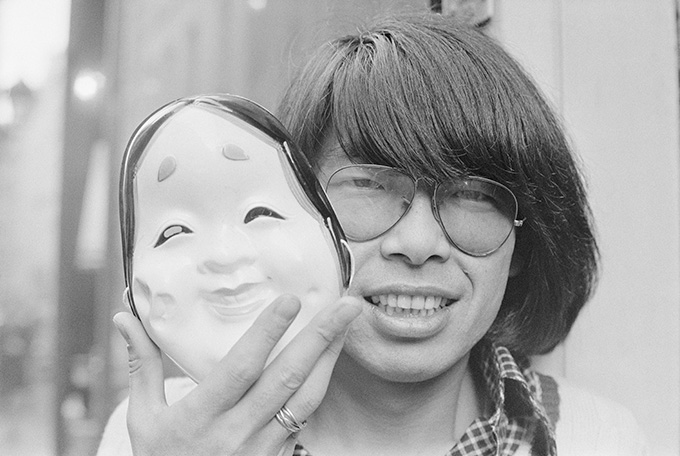
After graduating he travelled to Europe, taking the slow boat to Marseilles and finally settling in Paris in 1965. Takada later said that the cultures he encountered on stops through Asia, India and Africa had a significant impact on his aesthetic.
In Paris, traditional couture still dominated the fashion scene. For five years Takada worked as a freelance “styliste”, selling sketches to couture houses, and opening his first boutique, Jungle Jap, at Galerie Vivienne in 1970. The space was decorated with flamboyant murals in the style of Henri Rousseau. His early designs, with their combination of riotous print and traditional Japanese silhouettes, proved revolutionary.
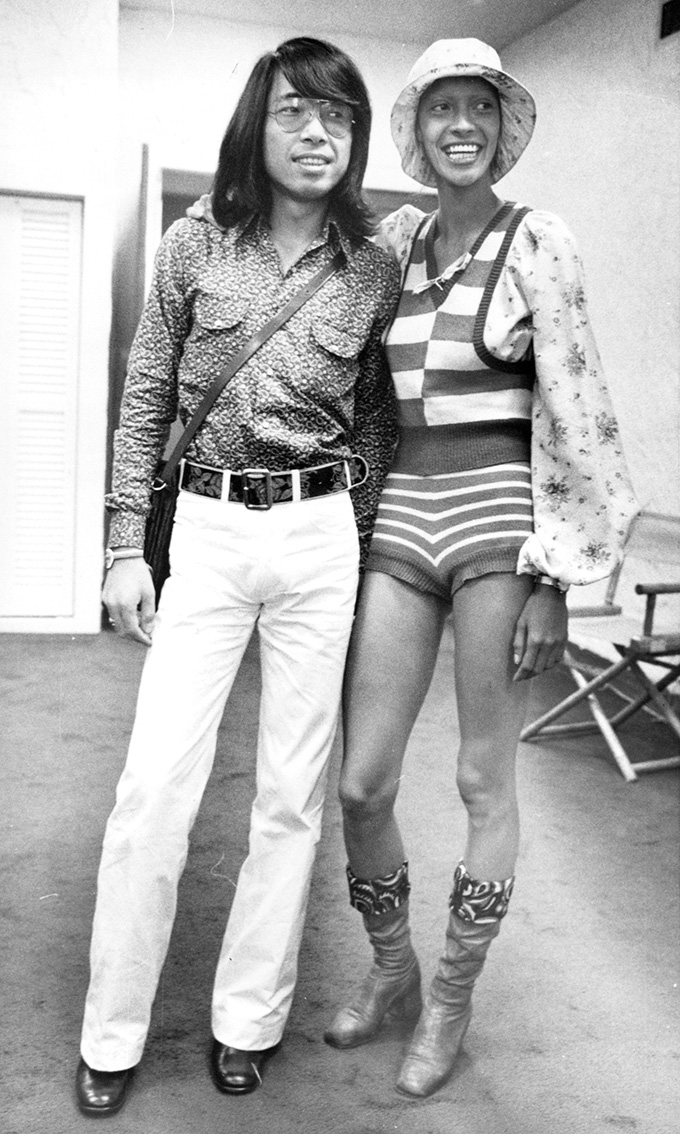
“It was only in 1970, when I started my brand and I had to really find an identity and make something new, that I realised I had to go back to my roots,” Takada told W Magazine in 2017. “So I started mixing Japanese influences with European culture… And then I quickly became influenced by other cultures and mixed in elements from around the world. That was very fresh to the market at the time—it was a whole new way of doing things.”
The collection was presented in New York City in 1971. That year, his designs featured in American Vogue, which declared that Takada’a quirky tropical boutique—with its smock tent dresses and dizzying prints—was among the chicest shopping destinations in the French capital.
His unique aesthetic of “fantasy folklore in gaudy pop colours” was a hit with the fashion press and the era’s most dynamic young things. Fans included Grace Jones, Loulou de la Falaise and Jerry Hall. “Kenzo must be one of the most imaginative designers in the world and fortunately he doesn’t take himself too seriously,” wrote journalist Bernadine Morris in 1973.
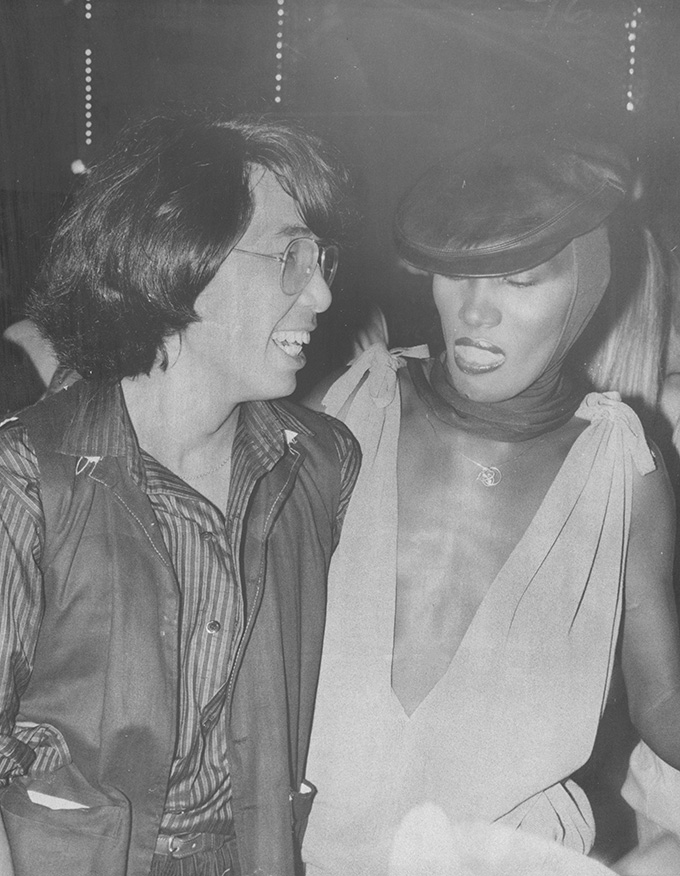
His fashion shows were joyously raucous affairs, with dancers, roller skaters and performance artists. In 1977 he held a fashion show at Studio 54. Grace Jones performed and Jerry Hall took to the catwalk. In 1978 and 1979, he held his shows in a circus tent, finishing with barely-clad horsewomen performers. The designer took his bow riding an elephant. “Fashion is not for the few, it is for all the people,” he said in 1972. “It should not be too serious.”
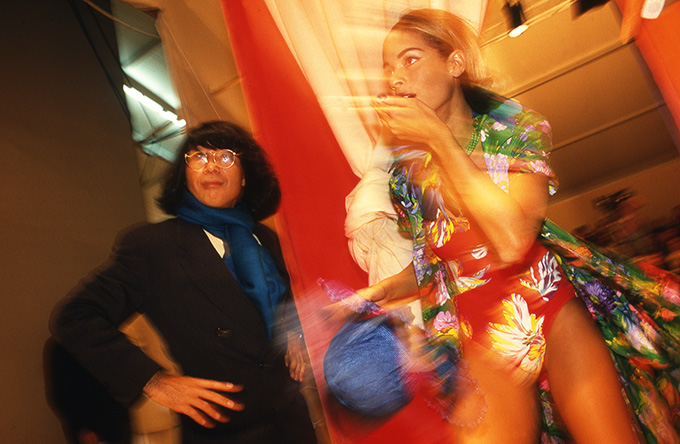
In the 1980s Kenzo boomed. Takada split from his business partner Gilles Raysse in 1980 and hired business graduate François Beaufumé as co-manager. Although their working relationship was fraught at times, together they built a formidable global business. The brand image was boosted, the store network became international, and Kenzo diversified into fragrance, interiors, menswear, denim and childrenswear. Kenzo launched its highly profitable fragrance division in 1988—well before it was the standard for fashion houses to do so.
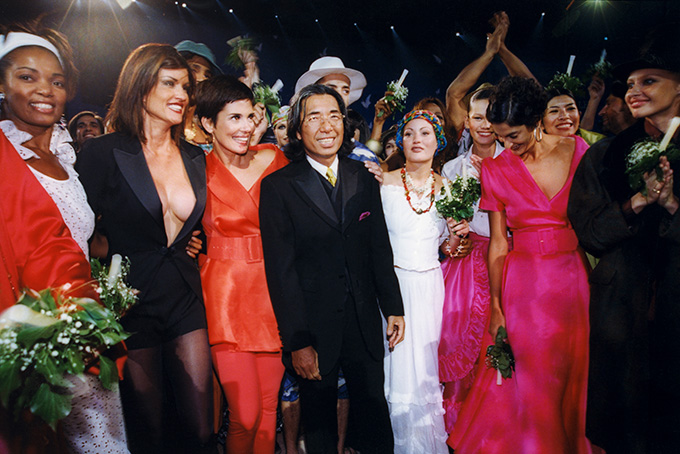
He continued to create his exuberant designs after LVMH bought the house in 1993, before eventually retiring in 1999. After he retired, Kenzo was first designed by Takada’s former assistant Gilles Rosier, and then Antonio Marras, before Opening Ceremony’s Humberto Leon and Carol Lim took over in 2011 and totally reinvigorated the brand. Takada went on to become firm friends with Lim and Leon, and could often be spotted on the Kenzo front row.
“We hope that we have injected the brand with a youthful spirit and a sense of fun and cheekiness.” Leon told British Vogue in 2012. “But we also want to respect and preserve the traditions of the Kenzo house, such as the importance of prints, and the sense of worldliness and travel that has been intrinsic to every collection in the history of Kenzo.”
After his retirement, Takada didn’t stop creating. Projects included Gokan Kobo, a high-end home accessories brand, and in 2016 Avon announced a new partnership with Takada to create a line of fragrances. The Kenzo Takada Collection, a collaboration with the French design house Roche Bobois, was unveiled in the summer of 2017. Takada became president of the Asian Couture Foundation in 2013, and he was honoured with the lifetime achievement award at the 2017 Fashion Editors’ Club of Japan Awards.
“I’m a little bit nostalgic about fashion shows and the energy behind them,” Takada told a journalist in one of the last interviews he did in 2017. “What I miss most is the people working in fashion. They have a lot of fantasy; they’re really creative and joyous.” And creative and joyous is exactly how he will be remembered.





